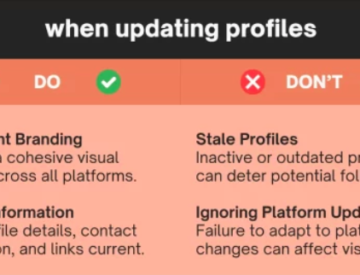Last month I had the pleasure to attend and act as Chair on the “Mobile & Innovation” track during EyeforTravel’s annual Social Media & Mobile Strategies in Travel summit in San Francisco. As always, a lovely event hosted in a great city, awesome networking and above all, informative sessions with leading edge brands sharing travel marketing best practices.

The last time I attended this show, back in 2010, travel and hospitality brands were all abuzz about social media, in particular Facebook and Twitter. Six years later, social networks are no longer a trendy topic but rather de rigueur in a travel marketer’s online toolkit.
Discussions are now more mature about how to integrate a content marketing approach that moves the needle, as brands move from engagement to conversions.
Travel is going mobile
Not surprisingly, mobile travel was now the hot topic, in every possible shape and form. Consider these 16 stats alone to understand why…
(Source: various presentations from LeanPlum, Google, Facebook and TripAdvisor representatives, among others)
- 65% of U.S. mobile users have never downloaded a single application.
- In fact, half of all mobile apps are downloaded… by only 7% of all mobile users!
- 80% of time spent on mobile apps is done on the Top 5 most popular mobile apps.
- Facebook owns two of these Top 5 most popular mobile apps!
- 90% of all mobile apps downloaded don’t ever get opened after 30 days!
- Even worse, it is estimated that 76% of mobile apps don’t get any usage after 24 hours!
- TripAdvisor is travel industry’s most popular mobile app, with more than 230 million downloads and 150 million monthly active users.
- You send text messages to clients or prospects? 63% of these messages are apparently sent at the wrong time!
- Mobile bookings in travel have grown by 1700% between 2011 and 2015, moving from 1% to 18% of online revenues.
- Still, this also means that 80% of online bookings don’t take place on mobile devices in 2016…
- The average mobile user unlocks its mobile device 150 times per day!
- The average mobile user had downloaded 86 apps, but will only use between 20-25 of them.
- 97% of Millenials say they share pictures while travelling (Facebook, Instagram, Whatsapp, Snapchat, etc.)
- But if 33% of Millenials don’t mind sharing information about their age or name, only 8% are willing to share data about web browsing habits or access to their social media accounts.
- 31% of consumers will search their next trip from a mobile device.
- 85% of international travelers have some kind of mobile device (iPod, tablet, smartphone) while on the road!
Of course, it’s almost impossible to summarize content from more than 30 presentations made during the event, as impressive as some of these stats may be. However, allow me to share the following impressions stemming from the event and various informal discussions:
Email is key
That’s right, that good old friend “email” was mentioned quite a few times, including during a presentation by Google. It remains an effective communication strategy, in particular when it comes to one-on-one relationships between brands and loyal customers and as part of various relationship marketing initiatives.
Destinations on Google
Impossible not to talk about the new product launched by Google, allowing to discover new destinations, and travel plans, with a best price approach in mind. Will it finally become the OTA-killer many have been suspecting for years? Too early to tell, and we’ll let consumers make that decision. For now, the jury is still out on this one…
Mobile web vs. Mobile app
This was perhaps the most interesting debate, period. In other words: must you really have a mobile app in order to be pertinent and cater to on-the-go travelers? No, obviously. A mobile app is a great tool, but you can simply read once again any of the above 16 stats to quickly realize that it’s a heavily saturated environment where it’s becoming increasingly difficult to stand out and stay relevant.
What you do need, however, is a strategy to provide a quality experience for travelers on the mobile web, where consumers don’t always want to have to download an app in order to engage with the brand.
Social media and Mobile
Social media now takes place on mobile, as recent stats show for networks like Facebook, Twitter, Pinterest, YouTube and the likes. And today, mobile native apps run the show, from Instagram to Vine, not to mention streaming darlings such as Periscope, Meerkat or even Facebook Live.
Travel brands who are on the top of their game are now investing massively into messaging apps, like Messenger, WhatsApp, WeChat and Snapchat, to name only the top-of-mind platforms wildly popular with Millenials, among others.
Wondering why the fuss about Millenials, anyway? This demographic will represent the #1 consumer segment in the U.S. hotel industry by 2018, if not 2017, according to a recent finding.
Read also: Best Practices in Travel Marketing: Messaging Apps
Sharing Economy
Last but not least, I am always impressed by the omnipresence of sharing economy players whenever I stay for a couple of days in the United States, with brands such as ZipCar, Lyft or Uber part of the everyday fabric, when it isn’t Airbnb, HomeAway or HomeExchange. If this movement is slowing down somewhere, it sure doesn’t seem to be in the U.S., that’s for sure!










Leave a Reply